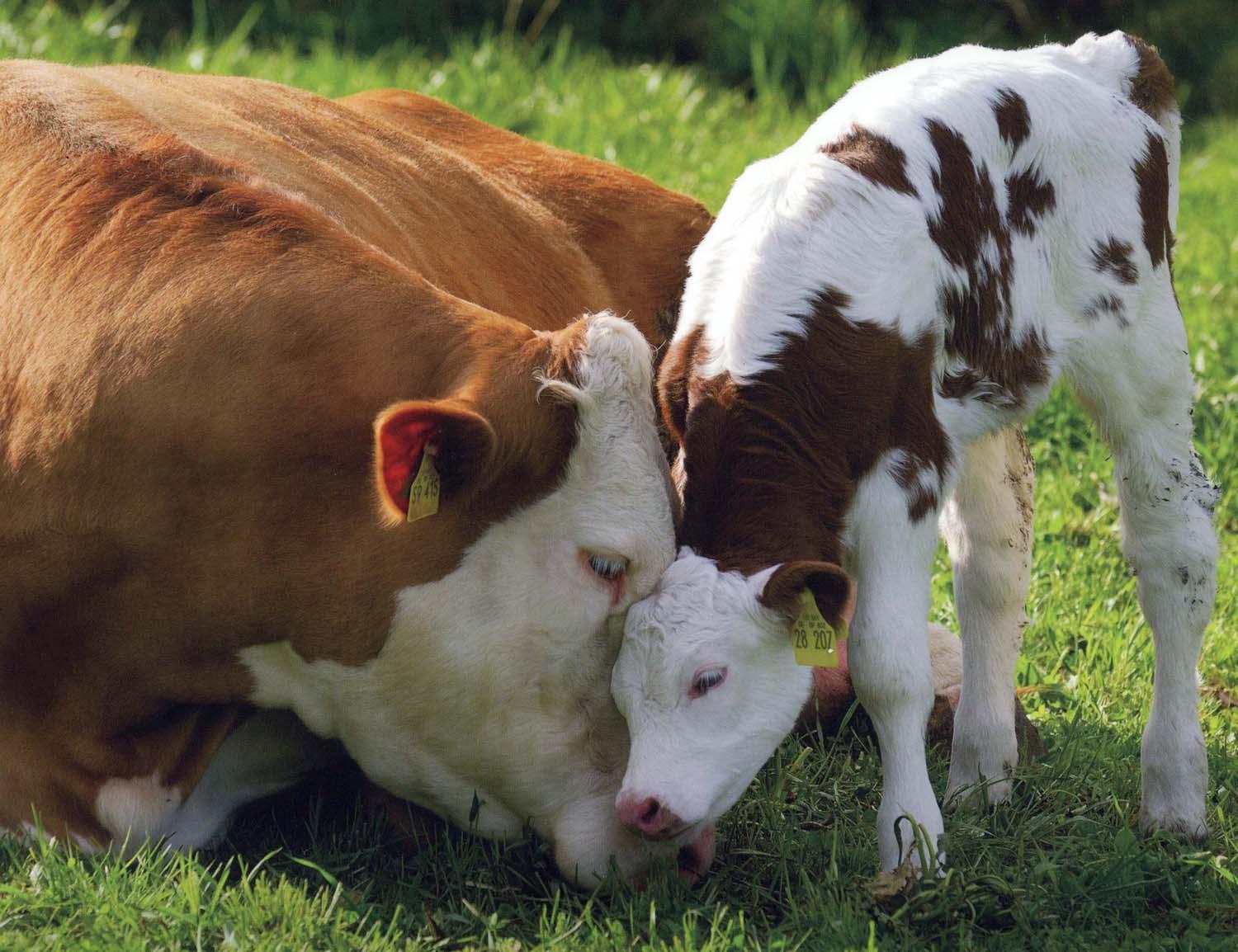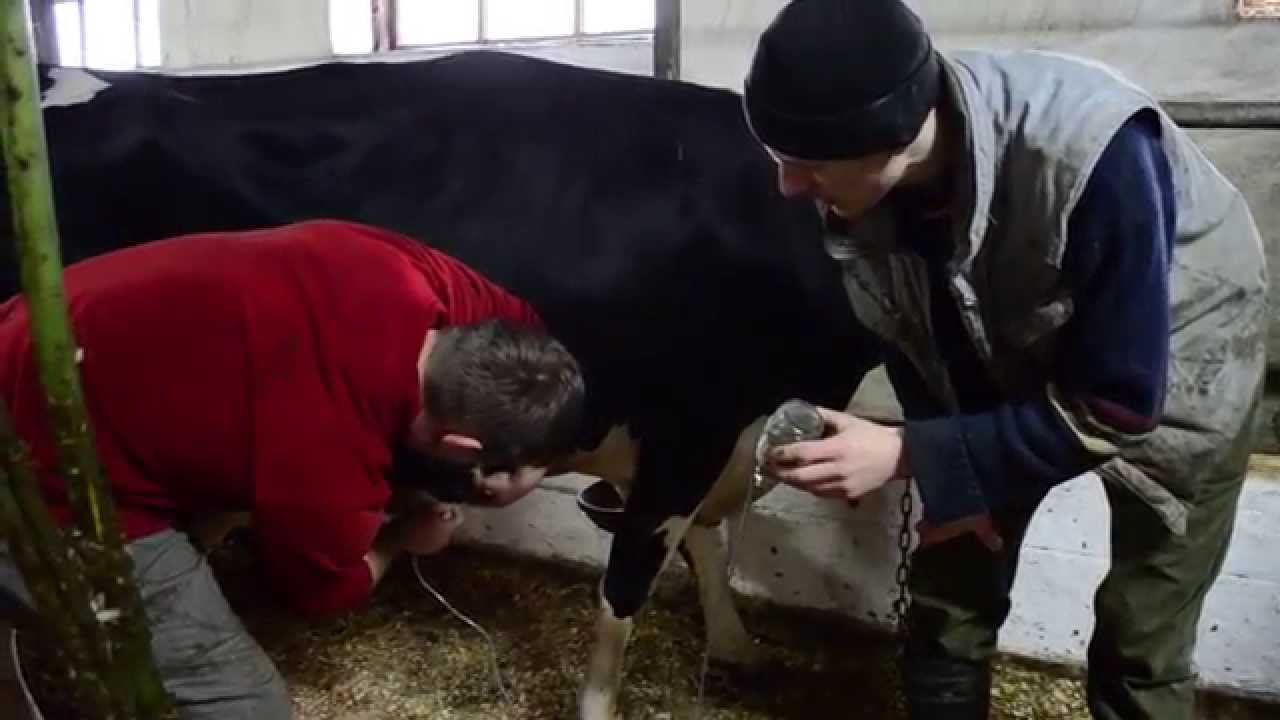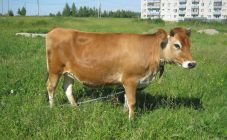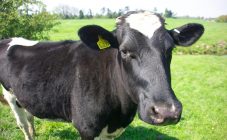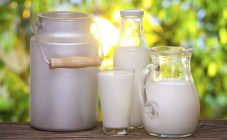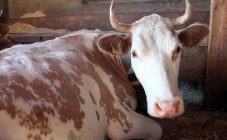Content:
Keeping a cow after calving
Often the cow wants peace after calving, but it should be noted that this period is very important and requires special care. After the birth of a calf, it must be washed with warm water.
Carrying and giving birth to a baby can negatively affect the health of a cow. The animal must rest well and replenish the reserves of nutrients. Since the cow loses a lot of liquid during childbirth, you need to water it well with warm, slightly salted water.
If the birth took place at home, the animal's uterus may begin to bleed. Measures are taken if the process does not stop naturally. The udder of the animal after childbirth can be very swollen, a return to normal is observed after 1-1.5 weeks.
Why doesn't the cow get up, eat, drink after calving
Postpartum pathologies in cows are diseases that require urgent treatment. Such ailments include paresis - an acute nervous disease in which paralysis of the pharynx, tongue, intestines and limbs occurs. An individual may lose consciousness during illness. The exact cause of the ailment is not known. Experts suggest that paresis is caused by overstrain of the nervous system during calving. However, the disease often develops due to malnutrition, and a lack of calcium, phosphorus and sugar negatively affects the body.
Experienced breeders have noticed that often postpartum paresis affects:
- individuals with a large body weight, in whose diet concentrates prevail;
- cows with high milk yield;
- animals 5-8 years old;
- in winter, when the cows are kept in stalls;
- in the first 3 days after childbirth.
With illness, there is a sharp decrease in blood sugar and calcium levels, which negatively affects the functioning of the thyroid and pancreas.
Postpartum paresis symptoms:
- cessation of gum;
- frequent shifting from foot to foot;
- trembling and involuntary muscle contraction;
- violation of gait.
The severe form is characterized by a sharp deterioration in the condition of the cow. The following signs appear:
- the animal constantly lies on its side, its head is thrown back;
- the eyes are closed, the cornea is cloudy, the pupils are dilated;
- the tongue is paralyzed and falls out of the mouth;
- mucus accumulates in the oral cavity;
- the cow breathes sharply with a sniff;
- cessation of intestinal peristalsis, excrement;
- the cow stops eating and drinking;
- decrease in body temperature to 35-36 ° С;
- lack of response to external stimuli.
What to do, how to treat postpartum paresis in cows
The cow is given an intravenous infusion of 10% calcium chloride in a volume of 200-400 ml, calcium borgluconate up to 800 ml, 40% glucose up to 1000 ml, saline solution up to 1000 ml.Also, the animal is given a subcutaneous injection of 20% caffeine-sodium benzoate 15-20 ml, intramuscular injection of 25% magnesium sulfate 40 ml and vitamin D2 2.5 million units. Often these funds are sufficient to improve the condition.
Tips from experienced breeders
Experienced cattle breeders use the folk method along with therapy for a faster recovery of the cow - they pump air into the udder. During all the manipulations, the cow should lie on its side. The udder is gradually removed, and the nipples are wiped with alcohol. Air is gradually pumped from the lower nipples by attaching a sterile milk catheter to the Evers machine. Air is blown in at low speed until the udder is completely filled, then the teats are bandaged for 15-30 minutes. and massage for a short time. If the animal is still lying, the manipulations are repeated after 6-8 hours. The cow can be milked only after 12-24 hours, after she rises to her feet, it cannot be milked in a lying position.
An alternative to pumping air is to introduce warm cow's milk at a temperature of 48 ° C into one udder lobe. The procedure uses a catheter, milk is taken from a healthy cow. You can fill up to 2 liters of liquid. The advantage of this method is a quick recovery, cessation of tremor, high efficiency without the infusion of drugs. Usually the cow rises after 30 minutes. after pumping milk into the udder, if it is difficult for the animal to get up, then you need to help him. If there is no improvement, the same portion is refilled with milk, and the rest are pumped with air.
You also need to worry about warming the sick individual. Camphor oil is applied to the sides of the cow along the entire length of the body, and then actively rubbed with straw and covered with a warm blanket. You can put a heating pad under the cow's side.
With a severe form of the disease, the cow cannot defecate on its own, therefore, it is necessary to cleanse the rectum from feces. The process of urination can be triggered by massaging the bladder. If the animal's abdomen is swollen, gas is eliminated using a trocar.
Prevention of postpartum cattle paresis
All of this can be avoided by providing the following:
- Do not overfeed the cow during dry periods and at the stage of lactation decline.
- Diversify food so that the diet does not consist of only one concentrated feed.
- Observe routine vaccination before calving.
- 5-8 days before calving, make an intramuscular injection of vitamin D2 10 million units.
- Add premixes to feed.
- After calving, feed the cow with veterinary power engineers such as Vitamas Energy and propylene glycol.
- For 14 days before calving, exclude juicy feed and concentrates from the diet. The diet should be canceled only after 10 days after childbirth.
- A week before calving, add 300 g of sugar or molasses to the feed daily.
- Exercise regular exercise.
It is possible to avoid postpartum paresis of cows if proper care and nutrition are provided during the dry period. It is important not to let the cows stagnate in the stall and take them out for a walk every day. You also need to vaccinate pregnant individuals on time and make up for the lack of vitamins and minerals. In the postpartum period, you should limit the consumption of concentrates, replacing them with a more varied diet. Only then will the farmer never know what paresis is in a cow.
